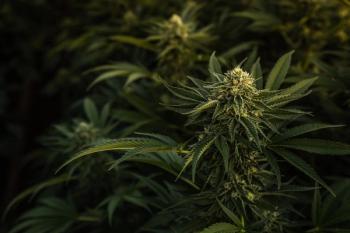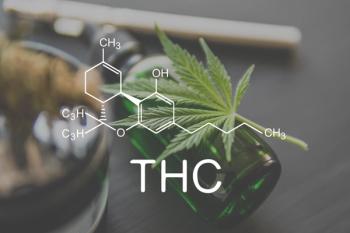
Cannabis Science and Technology
- October 2021
- Volume 4
- Issue 8
The Rise of In-line Color Remediation

Here, we explore the evolution and rise of color remediation methods in-line with extraction.
The legal cannabis market has created a narrative around the color of cannabis extract. Historically, correction to extract color has occurred in processes after extraction. However, extraction technology has evolved and begun to incorporate color remediation methods in-line with extraction. In this article, we explore the evolution and rise of color remediation.
Plant pigments function as a mechanism for photosynthesis. Chlorophyll and other plant pigments are harnessed to absorb as much light as possible. For some production facilities, the goal of cannabis extraction is to extract the cannabinoids, terpenoids, flavonoids, and other desirable compounds. In other production facilities, the goal of extraction is to concentrate and isolate cannabinoids. Plant pigments can co-extract in the process and produce a dark extract with an undesirable flavor. The legal cannabis market has created a narrative around the color of cannabis extract. Historically, correcting the color of cannabis extract has occurred in processes after extraction. However, extraction technology has evolved and begun to incorporate color remediation methods in-line with extraction.
Cannabis extract can have a wide range of colors depending on the extraction method, extraction parameters, age of input material, and moisture content of input. When ingesting cannabis extract, color is not as important as inhaling extract. Whole plant extracts, also known as full extract cannabis oil (FECO), often is the most broad spectrum extract on the market. Many medical patients find ingesting FECO to be one of the most medically beneficial cannabis products for treating ailments. It is challenging to truly understand the reason behind its efficacy, but anecdotal evidence points to the wide array of compounds that are found in FECO. While it is effective when ingested, FECO is a very dark extract due to the extraction process and should not be vaporized and inhaled as heat will burn some of the compounds. This will result in harmful combustion, a bad taste, and lung irritation.
Supercritical CO2 extraction produces a beautiful extract with a range of yellow, amber, or orange color. CO2 is an extremely versatile, efficient, and selective extraction solvent and produces a full spectrum extract. CO2 can be used as a liquid or supercritical fluid to extract cannabis oil, but supercritical fluid parameters are most efficient when extracting cannabinoids, terpenoids, and other desirable cannabis compounds. At higher pressures, CO2 will extract tetrahydrocannabinol (THC), tetrahydrocannabinolic acid (THCA), and other cannabinoids more efficiently. However, higher pressures can also extract a higher concentration of plant pigments resulting in a darker extract. CO2 extraction is most commonly used for production of inhalable extracts, like vape cartridges or concentrates, and full spectrum edibles. As mentioned, CO2 extracted cannabis oils can have a wide range of colors from yellow to amber-orange. Most commonly, these colors are a result of the input material genetics or grow-method. Sun-grown cannabis plants harvested later and cured are more likely to produce an orange or amber colored extract. As the trichomes are exposed to sunlight in the later stages of growth, they shift from a clear resin to an amber color.
Most CO2 and ethanol extraction is done using cured cannabis biomass. However, hydrocarbon extraction of freshly harvested and flash frozen plant material has quickly caught the attention of consumers. The terpene and flavonoid profiles continue to change after harvest and during the cure process. Flash freezing the freshly harvested plant and extracting the fresh plant has arrested the terpene and flavonoid profile, introducing a completely different flavor profile to the industry. In addition, the color of the extract is much lighter due to the plants reduced exposure to light.
As cannabis legalization has expanded throughout the country, the regulations around cannabis sales continue to develop and change depending on the market. In some states, consumers are able to smell the product before purchasing it. In other states, packaging must completely conceal the product. Color has become one method for consumers to understand the quality of the cannabis extract that they are looking to purchase. However, the lighter or clearer concentrates often indicate that some beneficial and integral compounds are being left behind in the extraction process. Despite this understanding, extraction companies are introducing technology, like in-line color remediation, in order to lighten the color of the extract.
The most common in-line color remediation techniques are columns of filters where extract is passed through during the extraction process. In the filter, the pigments are caught in the filter media as the rest of the extract solution passes through producing a much lighter colored extract. Common filter media are activated carbon, magnesium silicate, and bentonite clay. After the extraction column, the extract-solvent solution moves into the color remediation column (CRC) where the pigments are filtered. Next, the filtered extract-solvent solution moves to the separation or collection column for its final stages. Multiple CO2, ethanol, and hydrocarbon extraction equipment manufacturers offer modular CRC units to be added in-line with installed extraction equipment. While these modular units are growing in popularity, the question remains—are any toxins introduced to the extract as a result of these CRC columns that could cause harm when inhaled on a regular basis?
ABOUT THE COLUMNIST
LO FRIESEN is the founder, CEO, and Chief Extractor of Heylo. With a background in chemistry and clinical research, Lo was inspired to explore cannabis as a medicine and to enter the emerging industry. She joined Eden Labs, a leading CO2 extraction equipment manufacturer to support and expand a Research and Development department. There she managed the development of their latest and greatest CO2 extraction system. In 2017, after working with Eden Labs and another cannabis processor, Lo launched Heylo with a mission to help people get more out of life with cannabis.
How to Cite this Article
L. Friesen, Cannabis Science and Technology 4(8), 20-21 (2021).
Articles in this issue
about 4 years ago
Cultivation Breakthroughs for a More Uniform Plant Are Comingabout 4 years ago
Exploring the Impact of Cannabis on the Human Brain, Heart, and GutNewsletter
Unlock the latest breakthroughs in cannabis science—subscribe now to get expert insights, research, and industry updates delivered to your inbox.




